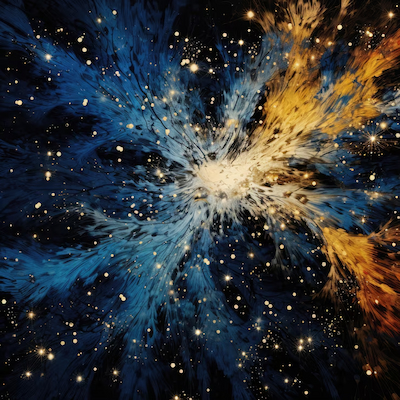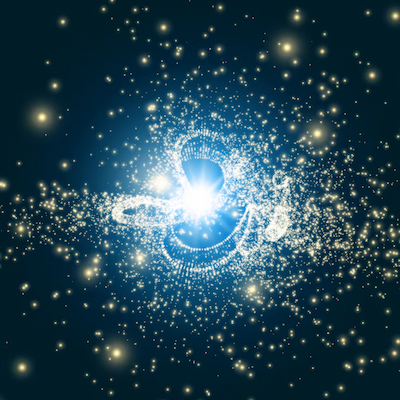
Stellar nucleosynthesis is one of the most fascinating and complex processes in astrophysics, responsible for the formation of chemical elements in the universe. This phenomenon occurs within stars, where the extreme conditions of temperature and pressure allow nuclear reactions to take place, resulting in the fusion of atomic nuclei. Through this process, light elements such as hydrogen and helium are transformed into heavier elements like carbon, oxygen, and even iron. Understanding stellar nucleosynthesis is crucial not only for astronomy but also for our very existence, as the elements that make up our bodies and our planet were forged in the depths of stars.
Beyond explaining the origin of elements, stellar nucleosynthesis also sheds light on the evolution of stars and the dynamics of the universe. As stars are born, live, and die, they play a fundamental role in the recycling of cosmic materials, contributing to the formation of new stars and planetary systems. Understanding this process helps us grasp the history of the universe, the formation of galaxies, and even the possibility of life on other planets. In this article, we will explore how stellar nucleosynthesis works, its advantages, and the details of this fascinating process.
How Does Stellar Nucleosynthesis Work?
Stellar nucleosynthesis occurs at different stages of a star’s life, depending on its mass and chemical composition. Initially, stars form from clouds of gas and dust, where gravity causes these materials to clump together. As the pressure increases in the forming star’s core, the temperature also rises, eventually reaching levels sufficient to initiate nuclear fusion. During this initial phase, known as the main sequence, the fusion of hydrogen into helium is the main process taking place, releasing vast amounts of energy and allowing the star to shine.
As the star ages and depletes the hydrogen in its core, it begins to contract under its own gravity. This further increases the temperature and pressure, enabling new fusion reactions to occur. Higher-mass stars can then begin fusing heavier elements, such as helium into carbon and oxygen. This process continues as the star undergoes multiple stages of fusion, creating increasingly heavier elements until the core becomes predominantly iron. At this point, iron fusion does not release energy, leading to a catastrophic collapse of the star, which may result in a supernova explosion.
During a supernova, the extreme conditions of temperature and pressure allow for the formation of even heavier elements, such as gold and uranium, through processes like neutron capture. These elements are then dispersed into space, enriching the interstellar medium and contributing to the formation of new stars and planets. Thus, stellar nucleosynthesis not only generates new elements but also plays a vital role in the evolution of the universe, enabling the recycling of materials and the creation of new cosmic structures.
In summary, stellar nucleosynthesis is a dynamic and continuous process that occurs throughout the life of stars. From hydrogen fusion to the formation of heavy elements during supernovae, each phase of this process is fundamental to the formation and evolution of the universe. Understanding this phenomenon helps us unlock the mysteries of the cosmos and our own origins.

Advantages of Understanding How Stellar Nucleosynthesis Works
Understanding stellar nucleosynthesis offers a range of benefits that go beyond scientific knowledge alone. First, it allows us to trace the history of the universe from the Big Bang to the formation of galaxies and planetary systems. By studying how elements were generated in stars, astronomers can reconstruct the chemical evolution of the cosmos, identifying how and when different elements were formed. This helps us understand the composition of the universe and the origin of the materials that make up Earth and other planets.
In addition, stellar nucleosynthesis provides valuable information about stellar evolution. Each type of star has a distinct life cycle, and understanding how nuclear fusion affects this cycle helps us predict the behavior of stars at various stages of their lives. For example, knowing that massive stars end their lives in supernova explosions allows us to identify and study these cosmic events, which are fundamental to the formation of new elements and the recycling of material in the universe.
Understanding stellar nucleosynthesis is also essential to astrobiology—the study of life in the universe. The elements formed in stars are the building blocks of life, and understanding how these elements were created can help us identify environments where life might exist beyond Earth. For example, the presence of elements like carbon and oxygen in exoplanets may indicate that those worlds have the potential to support life, and stellar nucleosynthesis is the key to understanding the origin of these elements.
Finally, studying stellar nucleosynthesis gives us a broader perspective on our own existence. By understanding that the elements composing our bodies were forged in stars, we are reminded of our deep connection to the universe. This awareness can inspire a sense of humility and wonder for the vastness of the cosmos and motivate us to continue exploring and learning about the world around us.
How Does Stellar Nucleosynthesis Occur?
-
Nuclear fusion in stars: The process of nuclear fusion is at the heart of stellar nucleosynthesis. In the cores of stars, temperature and pressure are so intense that atomic nuclei can overcome electrostatic repulsion and fuse, forming heavier nuclei. This fusion releases immense amounts of energy, which makes stars shine. During the main sequence, hydrogen fusion into helium is the primary mechanism, but as the star evolves, other elements begin to fuse.
-
Star formation and life cycle: Stars form from clouds of gas and dust known as nebulas. Gravity causes these clouds to collapse, increasing temperature and pressure in the core. When conditions are right, nuclear fusion begins, marking the start of the star’s life. Stars go through several phases, including the main sequence, red giant phase, and, in some cases, a supernova explosion that disperses new elements into space.
-
Formation of heavy elements during nucleosynthesis: Massive stars can create heavier elements through nuclear fusion processes in their cores. After hydrogen is depleted, they begin fusing helium into carbon and oxygen, and so on, until iron is formed. When the core becomes mostly iron, fusion no longer releases energy, leading to the collapse of the star and a supernova explosion, where even heavier elements are created.
-
The role of temperature and gravitational pressure: Temperature and gravitational pressure are critical factors in stellar nucleosynthesis. In a star’s core, temperatures can reach millions of degrees Celsius, and gravitational pressure is immense due to the star’s mass. These extreme conditions allow atomic nuclei to fuse, forming new elements. As the star evolves, these conditions change, enabling the fusion of different elements throughout its life.
-
Nuclear reactions and stellar evolution: The nuclear reactions in stars are responsible for the energy that keeps them stable. These reactions also determine the star’s evolution, as each phase of nuclear fusion corresponds to a specific stage in its life. As the star consumes its nuclear fuel, it undergoes significant changes, such as expanding into a red giant or collapsing into a white dwarf or a supernova.
-
Primordial nucleosynthesis and its impact: Primordial nucleosynthesis refers to the formation of the first elements in the universe shortly after the Big Bang. During the universe’s first few minutes, conditions were favorable for the fusion of light nuclei, resulting in the formation of hydrogen, helium, and small amounts of lithium and beryllium. These elements formed the basis for stellar nucleosynthesis once stars began to form and generate heavier elements. Primordial nucleosynthesis had a lasting impact on the composition of the universe and the formation of cosmic structures.
Stellar nucleosynthesis is therefore a complex process involving the fusion of atomic nuclei under extreme conditions. From star formation to the creation of heavy elements during supernova explosions, each stage of this process is fundamental to the evolution of the universe and the formation of new planetary systems.

Did You Enjoy Learning About How Stellar Nucleosynthesis Works?
Stellar nucleosynthesis is a fascinating topic that connects us deeply to the universe. By understanding how the elements that make up everything around us were formed, we can better appreciate the beauty and complexity of the cosmos. This knowledge not only enriches our scientific understanding but also inspires us to explore more about our origins and our place in the vast universe.
If you found this topic interesting, there is much more to discover about astrophysics and the mysteries of the cosmos. Stellar nucleosynthesis is just one part of the rich tapestry that makes up the story of the universe. Continue your journey of learning and exploration, and who knows what new discoveries may await you!
Frequently Asked Questions
What is stellar nucleosynthesis?
Stellar nucleosynthesis is the process that creates new elements inside stars.
How does stellar nucleosynthesis work?
In this process, stars burn hydrogen and transform it into helium, releasing energy.
What elements are formed in stellar nucleosynthesis?
In addition to hydrogen and helium, carbon, oxygen, and other heavier elements are formed.
Why is stellar nucleosynthesis important?
It is crucial for forming the elements that make up our bodies and the planet.
Where does stellar nucleosynthesis occur?
This process happens inside stars, in their hottest and densest layers.





